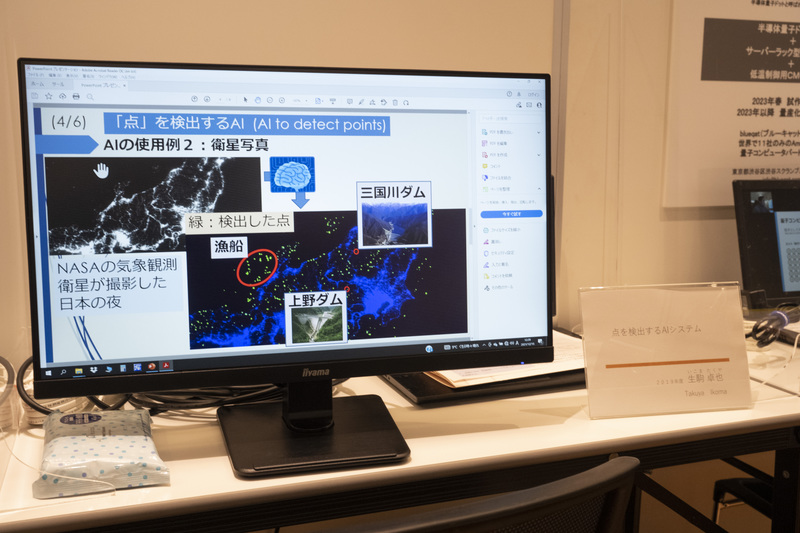Interviews

The AI Point-Detection System that Streamlines and Optimizes Imagery (Part 3)
Takuya Ikoma
Takuya Ikoma’s highly versatile “AI Point-Detection System" was finally selected for the INNO-vation Program. We spoke with him about its applications.
Interviewer & Japanese Writer: Yamamoto Takaya; Translation & Editing: Matthew Cherry
Even after the 2019 INNO-vation Program’s Disruptive Challenge had ended, Ikoma continued to work on his AI Point-Detection System. He is currently working toward a new version of the system, with upgraded point-detection ability able to draw out harder-to-see points and make them even clearer than ever before.
The current challenge that Ikoma faces is getting people to know that his system exists. Though the AI Point-Detection System has a unique ability allowing for speedy detection of specific points, if it’s unknown to the scientific world, having other people try out the tech is a moot point. That’s why Ikoma is now focusing on cloud systemization. By making the AI Point-Detection System available through the cloud, researchers will be able to easily utilize it for their own initiatives. After uploading an image to the cloud-based system, the AI reports back the point-recognition results and gives the exact location coordinates of each individual point.
“I’m looking to implement it by Spring of 2022. By uploading data from experiments to the system, the overall speed of any given research can be increased. I assume that would be the standard way of using the AI Point-Detection System, though I think it will also serve as a starting point for all kinds of different research,” Ikoma stated. “It’s not like I have the ability to conduct various kinds of specialized research, so I hope researchers from other fields are able to use it to contribute to their research progress and speed.”
*The AI Point-Detection System website application was officially released before this story was published. You can try it out with your own photos of the night sky at the following link.
https://webapp.tilfproject.com/
Ikoma’s AI Point-Detection System is based on his “AI for Astrophotography” system that he initially submitted into the 2014 INNO-vation Program six years previously. Ikoma spoke about the methodology he used to keep his motivation during that continuous six-year development cycle.
“From conception to completion, research can take a long time to finish. During development, I think I would have run out of motivation had I not seen any results. That’s why before I reach my final objective, I create a number of different prototypes and collect the results from them throughout the development process. Those results keep me motivated to improve, revise, and continue pushing my research forward.”

Ikoma’s Exhibition Booth at OPEN INNO-vation 2021
Ikoma, who was selected for the INNO-vation Program’s Disruptive Challenge on his second try, has a message to give to those thinking about taking on the challenge.
“I think that most people who apply for the INNO-vation Program are individuals who aren’t affiliated with any sort of research organization. I was the same way, but I feel like those who have interesting ideas don’t really have the opportunities to research them further or present them to others. INNO-vation is an incredibly valuable program that provides such opportunities. I encourage anyone to have fun taking on this challenge.”
As he continues to move forward in his own objectives, Ikoma has these words of wisdom to give: continuing to improve on one’s research and taking on new challenges are simply two unique ways to have fun.
Takuya Ikoma’s Profile

